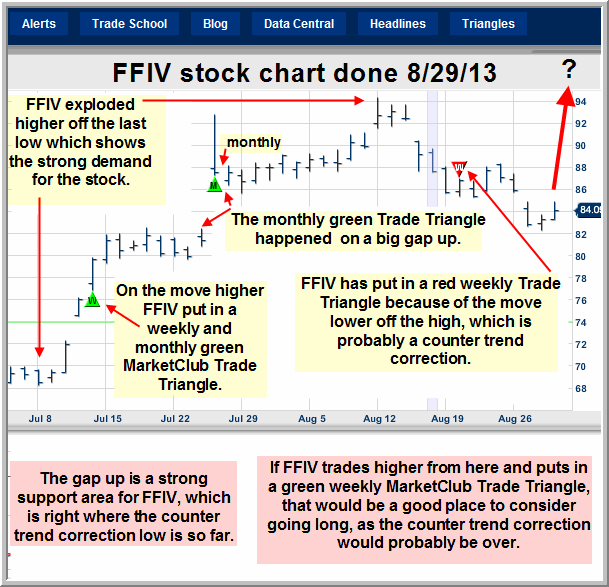The Energy Report: With oil prices firming up over the past couple of months and the spread between West Texas Intermediate (WTI) and Brent Crude narrowing, what are your price expectations for the remainder of 2013 and into next year?
Phil Juskowicz: While I don't spend a lot of time predicting commodity prices, I personally see relatively stable short-term oil prices. Intermediate or long-term prices may weaken, assuming no supply disruptions arise from political upheavals, while gas prices may strengthen based on supply/demand fundamentals. We've seen continued oil supply growth and the short term market seems to be pretty range bound, having developed a good base around the $100 per barrel ($100/bbl) level.
TER: Where do you see some of the best investment opportunities in the oil and gas business?
PJ: Micro-cap exploration and production (EP) stocks have severely underperformed the SP Small Cap EP Index since the second half of 2011 (H2/11). However, the definition of "small cap" depends on who you're talking to. The Small Cap EP Index consists of companies around the billion-dollar range like Approach Resources Inc. (AREX:NASDAQ) and Northern Oil Gas Inc. (NOG:NYSE). Casimir has a micro-cap EP index, which is comprised of companies with market caps up to $500 million ($500M) with some names under $100M. That index level started to diverge in H2/11. Both of these groups consist of relatively equal gas/oil weightings, so the performance should not, in our opinion, be attributed to the relative strength of oil prices over gas that commenced around that time. As a result, we believe that there are attractive investment opportunities in the micro-cap EP universe.
Casimir Micro-Cap EP Index (White) vs. SP Small-Cap EP Index (Yellow)

Casimir Micro-Cap EP Index composed of: AMZG, ANFC, CAK, CPE, CXPO, EGY, EEG, ENRJ, ENSV, FEEC, FXEN, GMET, GNE, HDY, HNR, IFNY, IVAN, LEI, MCEP, MILL, MPET, MPO, OEDV, PHX, PNRG, PSTR, RDMP, SARA, SSN, STTX, TAT, TENG, TGC, TPLM, USEG, WRES, ZAZA
Source: Bloomberg; Casimir Capital
TER: How do you choose the companies in your coverage list?
PJ: We look for small companies that have largely flown "under the radar screen" and are underfollowed. The companies we cover have strong management teams and operate in premier areas with good assets that have substantial cash flow potential.
TER: Do you cover any service companies?
PJ: Enservco Corp. (OTCBB:ENSV) is on our "watch list". The company is the only nationwide provider of hot oiling, well acidizing and frack heating services generally used to coax oil out of the ground, for example to counter paraffin buildups. Enservco experienced healthy margins in Q2/13 despite it typically being a seasonally weak time for heating services. The company continues having to turn customers away in some areas while it builds out its fleet. Management, in our opinion, has a track record of building successful companies and its regional staff has strong relationships with EPs. The company is also expanding into other basins and successfully tapping into new revenue sources.
TER: Why aren't competitors seeing the opportunity here and moving in to get a piece of the action?
PJ: There are regional pockets of mom and pop shops that will do some of these services, but, a nationwide company like a Noble Energy Inc. (NBL:NYSE) might turn to Enservco because it already has a reliable relationship with Enservco's staff in different areas. Enservco's services account for a very low percentage of total well drilling and completion costs (it might cost around $100,000 to service a $7M well) so customers are not as likely to conduct competitive bidding processes. Instead, they choose to use a company with which the frontline managers already have existing relationships.
TER: So it has developed a national reputation, which is its competitive strength.
PJ: And it's building out the capacity as we speak. Enservco is expanding its already large presence in the Marcellus Formation. In its Q2/13 conference call, management said they were starting to see the Utica play out a little bit. The Utica underlies the Marcellus in a lot of areas and Enservco gets some economics of scale there. [See map] Furthermore, management has been getting the word out more and also may be contemplating a reverse stock split and listing on another exchange.

Source: Marcellus Coalition
TER: What EP names on your coverage list look interesting?
PJ: We like Miller Energy Resources (MILL:NYSE; MILL:NASDAQ), which, in late 2009, captured former Pacific Energy Resources Ltd. assets out of bankruptcy that were valued at $500M for an outstanding $4.5M. Miller's entire enterprise value, meanwhile, is just $240M. Moreover, its infrastructure assets were valued by third parties on behalf of its lender at $190M. What makes these assets most attractive is the fact that recent well results indicate that original estimates by Forest Oil (which sold the properties to Pacific in 2007) may in fact be correct, which would mean that these Alaskan assets could contain 100200 million barrels (MMbbl) of recoverable oil reserves. Proved oil reserves presently stand at 8.61 MMbbl.
TER: How was Miller able to buy $500M worth of assets for less than 1% of their value? Even in bankruptcy, you'd think that there'd be buyers willing to pay more than that.
PJ: David Hall, a Miller Energy executive who had worked on the assets even before Pacific bought them from Forest Oil in 2007, was following the Alaskan bankruptcy proceedings. He got in touch with the CEO of Miller, Scott Boruff, and told him about these assets that were becoming available.
TER: Why does Miller believe that the original estimates of recoverable oil reserves may, in fact, be correct?
PJ: The thesis is that Forest Oil used the wrong completion techniques, which is why well performances had dropped off. The completion techniques Forest Oil used were in fact different from techniques used for other assets on the McArthur Trend. David Hall believed that workovers on existing wells, for example, replacing some electric submersible pumps and making changes to completion techniques on new wells, could improve production. Low and behold, that's exactly what's happened.
In addition, Miller just started doing sidetracks of some of these old wells. It posted a 21-day production test of its RU-2A well several weeks ago at 1,314 barrels per day, which would indicate that that the oil's there and it's recoverable. Management has been doing a good job of utilizing preferred equity to have substantial capital expenditure programs without diluting the common shareholders. To top it off, it has about 600,000 undeveloped acres that it's just starting exploration on as well.
TER: What other names look interesting?
PJ: I like Trans Energy Inc. (TENG:OTCBB), which is a pure play in the Marcellus Shale. The company holds about 20,000 net acres in the Marcellus, a substantial portion of which are in the core, liquids-rich part of the play. Operators, including Range Resources Corp. (RRC:NYSE), EQT Corp. (EQT:NYSE) and Gastar Exploration Ltd. (GST:NYSE), continue to increase their return assumptions for acreage adjacent to Trans Energy's. The company's production is set to ramp up as soon as Williams Companies Inc. completes the construction of certain infrastructure. Trans Energy's acreage is in northeast West Virginia, on the southwest Pennsylvania border. There's been a lot of success coming out of that area.
TER: What sort of strategy would you suggest our readers consider?
PJ: I think the micro-cap space, in general, is less correlated to the market's vagaries. Perceived changes in foreign interest rates, for example, have a larger effect on large-cap names. Micro-cap pricing is determined more by company-specific dynamics, such as anticipated future cash flows. Plus, a lot of micro-cap names and EPs in general seem to be more active on hedging, and therefore should be less susceptible to changes in commodity prices. As a result, investors that exercise due diligence should be rewarded for accurate cash flow predictions. If you want to find companies where your hard work can actually pay off, then the micro-cap space is a good place to look.
Micro caps seem to be getting more active in reaching new investors, and some of the management teams have regrouped from previous lives and are starting up very successful new companies. I think Bonanza Creek Energy Inc. (BCEI:NYSE) is a great example of management hailing from one company and getting back together and starting all over again.
TER: Thanks for talking with us today and giving us some interesting input, Phil.
PJ: I appreciate the opportunity.
Philip Juskowicz, CFA is a managing director in the research department at Casimir Capital, a boutique investment bank specializing in the Natural Resource industry. Juskowicz began his career at Standard Poor's in 1998, where he was one of the first analysts to recommend Mitchell Energy, credited with discovering the Barnett Shale. From 2001-2005, He worked with a former geologist in equity research at both First Albany Corp. and Buckingham Research. At Buckingham, Juskowicz was promoted to a senior oilfield service analyst position, leveraging his extensive knowledge of the EP space. From 2006-2010, he was an insider to the oil and gas industry, serving as a credit analyst at WestLB, a German investment bank. In this capacity, Juskowicz was responsible for $500M of loans to energy companies and projects. He earned a Master of Science in finance from the University of Baltimore.
Want to read more Energy Report interviews like this? Sign up for our free e-newsletter, and you'll learn when new articles have been published. To see a list of recent interviews with industry analysts and commentators, visit our Interviews page.
DISCLOSURE:
1) Zig Lambo conducted this interview for The Energy Report and provides services to The Energy Report as an independent contractor. He or his family owns shares of the following companies mentioned in this interview: None.
2) The following companies mentioned in the interview are sponsors of Streetwise Reports: None.
3) Philip Juskowicz: I own or my family owns shares of the following companies mentioned in this interview: Bonanza Creek Energy Inc. I personally am or my family is paid by the following companies mentioned in this interview: None. My company has a financial relationship with the following companies mentioned in this interview: Empire Energy Group Ltd. I was not paid by Streetwise Reports for participating in this interview. Comments and opinions expressed are my own comments and opinions. I had the opportunity to review the interview for accuracy as of the date of the interview and am responsible for the content of the interview.
4) Interviews are edited for clarity. Streetwise Reports does not make editorial comments or change experts' statements without their consent.
5) The interview does not constitute investment advice. Each reader is encouraged to consult with his or her individual financial professional and any action a reader takes as a result of information presented here is his or her own responsibility. By opening this page, each reader accepts and agrees to Streetwise Reports' terms of use and full legal disclaimer.
6) From time to time, Streetwise Reports LLC and its directors, officers, employees or members of their families, as well as persons interviewed for articles and interviews on the site, may have a long or short position in securities mentioned and may make purchases and/or sales of those securities in the open market or otherwise.
Article source: http://feedproxy.google.com/~r/theenergyreport/caoK/~3/LTUh9mSdjKo/15553



 We’ve asked Michael Seery of
We’ve asked Michael Seery of 








